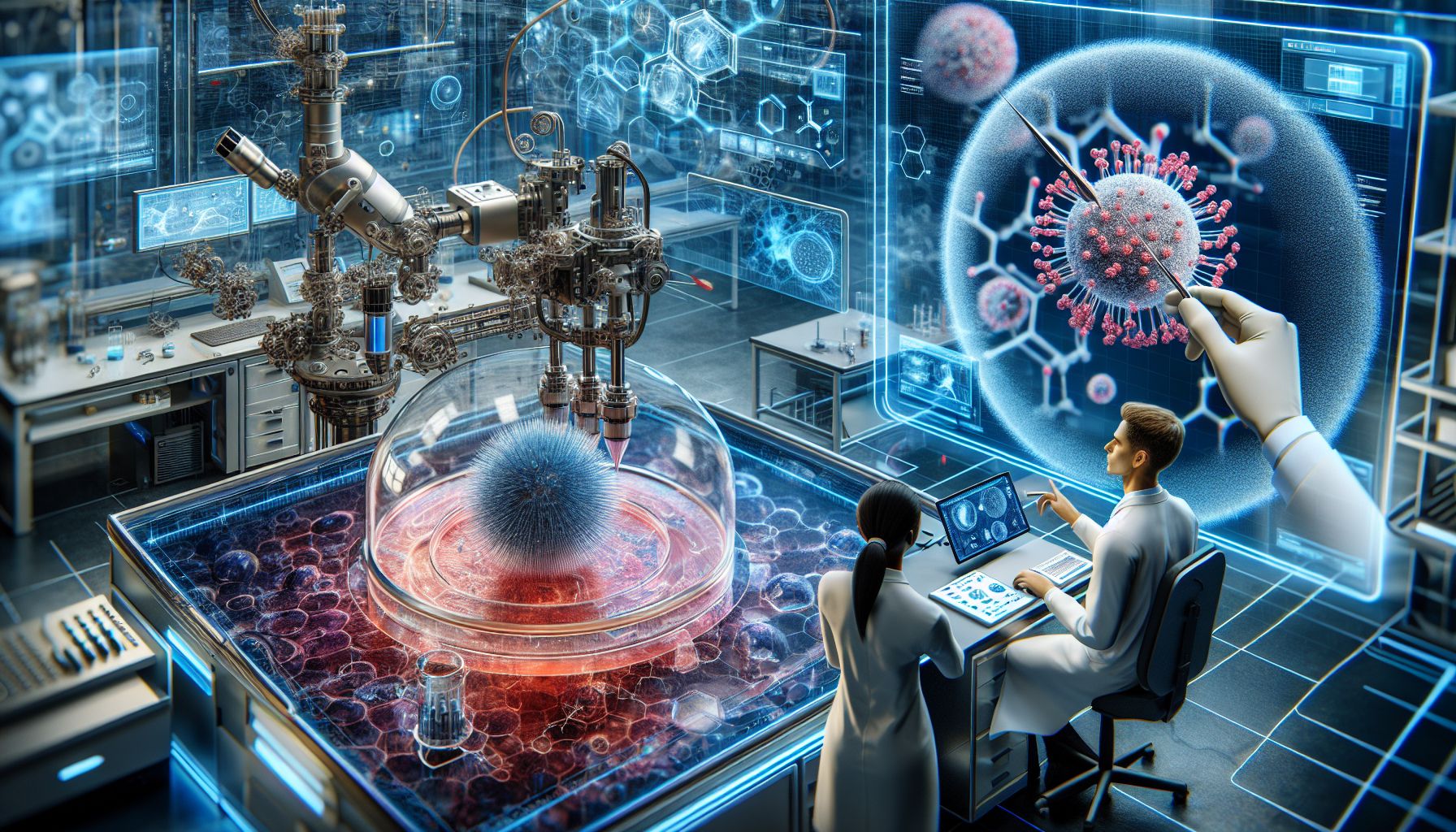📌 Let’s explore the topic in depth and see what insights we can uncover.
⚡ “Imagine a world where cancer is no longer a death sentence, and drug side-effects are a thing of the past. Welcome to the revolutionary world of nanotechnology in medicine.”
The realm of medicine is experiencing a paradigm shift, one that is smaller than you could possibly imagine. This revolution is not coming in the form of a new blockbuster drug or a groundbreaking surgical procedure, but rather, it is arriving on the wings of nanotechnology. Nanotechnology, the science of manipulating materials at the atomic and molecular level, is making waves in numerous sectors, but nowhere is its impact more profound than in the field of medicine. The possibilities are endless and the future of healthcare is set to change dramatically, all thanks to this pint-sized science. In this blog post, we’ll explore the mind-boggling breakthroughs that nanotechnology is bringing to medicine, from targeted drug delivery to regenerative medicine, and how it is shaping the future of healthcare. We will also look at some of the challenges and ethical considerations that come with it. So, buckle up and prepare to embark on an exciting journey into the future of medicine, a journey that’s smaller than a speck of dust but has the potential to make a colossal impact.
Nanomedicine: The Future is Small

Micro Marvels: Nanotechnology Revolutionizing Healthcare
Nanomedicine is the application of nanotechnology in the field of health care. It involves the use of nanoparticles to improve the behavior of drug substances. Today, nanomedicine is one of the most important areas of nanotechnology, and it’s already making its mark. Imagine a world where doctors can spot cancerous cells before they even form a tumor, or where drugs go straight to their intended target without causing any side effects. 🔍 Interestingly, the world that nanomedicine promises. With nanoparticles, doctors can deliver drugs directly to diseased cells, reducing the risk of damage to healthy cells and minimizing side effects. Furthermore, nanoparticles can also be used to improve the sensitivity of imaging technologies, making it easier to spot diseases at their earliest stages. With nanomedicine, we could potentially catch diseases before they become a problem, drastically improving patient outcomes.
Nano-Robots: The Tiny Doctors of the Future
When we think of robots, we often picture large, clunky machines. But nanorobots, also known as nanobots, are a different breed altogether. These microscopic machines could be the future of medicine, capable of performing complex tasks at a cellular level. Imagine a swarm of tiny robots, each smaller than a grain of sand, coursing through your bloodstream, seeking out and eliminating disease-causing agents. Sounds like science fiction, right? Well, it’s not as far-fetched as it sounds. 🧩 As for Researchers, they’re already developing nanobots that can deliver drugs to specific cells, perform minor surgeries, or even scrub plaque from your arteries. While we may be a few years away from seeing nanobots become commonplace in medicine, the potential they hold is immense. In the future, we could see nanobots being used to fight diseases like cancer, diabetes, and heart disease.
The Challenge of Nanotechnology in Medicine
While the potential benefits of nanotechnology in medicine are enormous, there are also some significant challenges to consider. For one, there’s the issue of safety. Nanoparticles can interact with cells and biological systems in ways that larger particles can’t, and this could potentially lead to unforeseen side effects. Moreover, there’s the issue of cost. Developing nanotechnology-based therapies and technologies is expensive, and this could limit access to these treatments. As with any emerging technology, it’s important to balance the potential benefits with the potential risks and costs. In addition to these practical considerations, there are also ethical issues to consider. For example, if we can use nanotechnology to enhance human capabilities beyond what’s considered normal, should we? As we move forward with this exciting technology, these are questions we’ll need to answer.
🧭 Conclusion
The world of nanotechnology is truly mind-boggling. It’s a world where size matters, but in this case, the smaller, the better. From treating diseases with pinpoint precision to creating tiny robots that can perform microsurgeries, the possibilities are as vast as they are thrilling. However, as we step into this brave new world, we also need to tread carefully. The challenges and ethical considerations that come with nanotechnology are as complex as the technology itself, and they require thoughtful deliberation. But one thing is clear: nanotechnology is set to revolutionize medicine, and it’s a journey that promises to be as exciting as it is impactful. So, as we stand on the precipice of this new era, it’s time to embrace the small and welcome the big changes it brings. In the realm of medicine, the future is not just bright; it’s also incredibly small, and that’s something to be excited about. The world of nanomedicine is just beginning to unfold, and it’s going to be a thrilling ride.
🌐 Thanks for reading — more tech trends coming soon!
